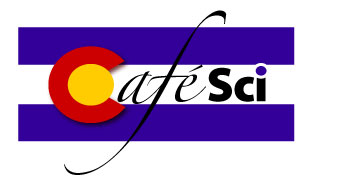About the topic
Bio
Get the Flyer (pdf)
About the topic
The wind usually blows strongly from east to west along the equator in the Pacific. This piles up water in the western part of the Pacific. In the eastern part, deeper water (colder than the sunny surface water) gets pulled up from below to replace the water pushed west. So the normal situation is warm water in the west, cold in the east. In an El Niņo, the winds pushing the water west weaken. Some of the warm water piled up in the west slumps back down to the east, and not as much cold water gets pulled up from below. So the water near South America gets warmer, a hallmark of an El Niņo. The warmer ocean then makes the winds weaker, and El Niņo grows. El Niņo is one part of the Southern Oscillation, which is the see-saw pattern of reversing surface air pressure between the eastern and western tropical Pacific; when the surface pressure is high in the east it is low in the west, and vice-versa. Because the ocean warming and pressure reversals are, for the most part, simultaneous, scientists call this phenomenon the El Niño/Southern Oscillation or ENSO for short. I'll talk about weather and climate modeling, what the issues are, how good our observations are, and what this all says about El Niņo.
For example, in a recent paper written with colleagues at UC Boulder and NCAR, titled Will there be a significant change to El Niño in the 21st century? they assess the effects of anthropogenic (man-made) climate change on ENSO by comparing control data from the pre-industrial era and the 20th century to projections for the 21st century and beyond, to 2100-2300. The results suggest that the timescale for major change is on the order of a century or more, making it hard to make inferences from year-to-year data. However: "An examination of atmospheric teleconnections, in contrast, shows that the remote influences of ENSO do respond rapidly to climate change in some regions, particularly during boreal [far north] winter. This suggests that changes to ENSO impacts may take place well before changes to oceanic tropical variability itself becomes significant." Put another way, "the impacts of El Niņo are changing even though El Niņo itself doesn't change."
NOAA has an El Niño page with a fascinating animated map.
Bio
 Baylor Fox-Kemper received his PhD in 2003 from the MIT/Woods Hole Joint Program. He is Assistant Professor in the Department of Atmospheric and Oceanic Sciences at CU Boulder. He studies the physics of the ocean and how the ocean fits into the Earth's climate system, using models that range from the global scale to focused process models that apply universally.He seeks mathematically interesting problems with practical uses.
Baylor Fox-Kemper received his PhD in 2003 from the MIT/Woods Hole Joint Program. He is Assistant Professor in the Department of Atmospheric and Oceanic Sciences at CU Boulder. He studies the physics of the ocean and how the ocean fits into the Earth's climate system, using models that range from the global scale to focused process models that apply universally.He seeks mathematically interesting problems with practical uses.
The research produces parameterizations, diagnostics, and toy models. That is, after study of complex processes in dedicated and computationally expensive models, he works out simple but accurate approximations and crucial measurements to diagnose. Sometimes the goal is to improve the community models, and sometimes the goal is to aid understanding with a toy model that mimics the complex system.
Baylor also teaches classes in the Department of Atmospheric and Oceanic Sciences and is involved in cross-Boulder efforts in oceanography.
Baylor is a member of AGU, AMS, Sigma Xi, and Phi Beta Kappa. His awards include the AGU Ocean Sciences Early Career Award, a NOAA Climate and Global Change Postdoctoral Fellowship, and the AMS 14th Conference on Atmospheric and Oceanic Fluid Dynamics Outstanding Student Presenter Award.
